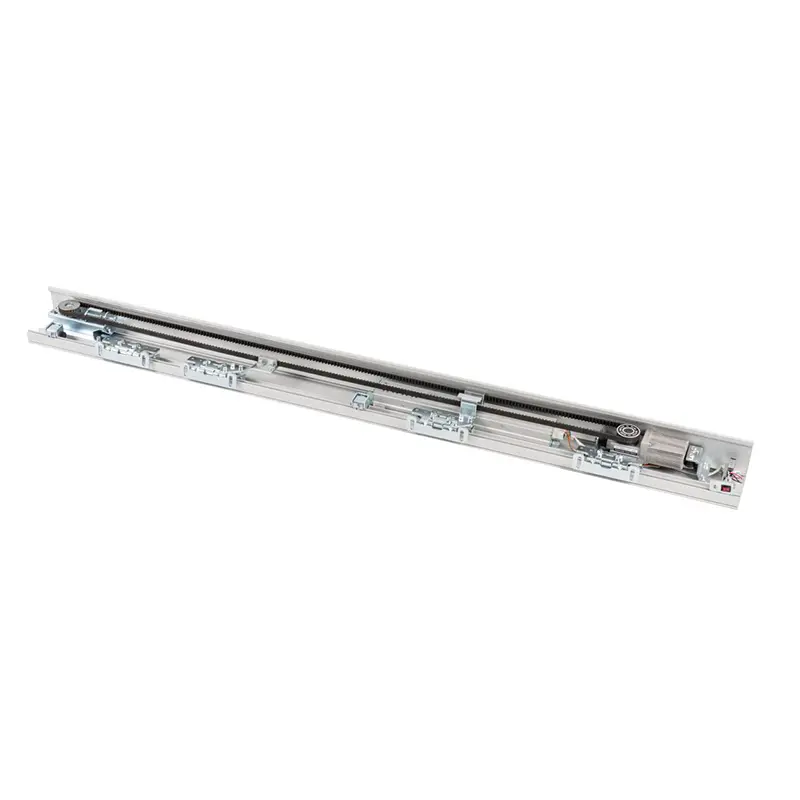
Compared to other types of doors, Light-Duty Automatic Sliding Door can provide a range of benefits. Firstly, they require less floor space when opened, making them perfect for places where space is limited. Secondly, they provide a more modern and stylish look compared to traditional doors. Thirdly, they are more energy-efficient because they only open when someone approaches, reducing unnecessary energy consumption. Lastly, they are more convenient for people with disabilities or mobility issues because they require less physical effort to open or close.
To ensure the proper functioning of Light-Duty Automatic Sliding Door, it is important to maintain them regularly. Firstly, you need to clean the tracks where the door slides back and forth. Secondly, you need to lubricate all the moving parts, including hinges, rollers, and tracks. Thirdly, you need to inspect and replace the sensors and control systems periodically. In case of any damage, always contact the professionals to fix the problem.
There is a range of materials used in Light-Duty Automatic Sliding Doors, including: stainless steel, aluminum, glass, wood, and PVC. The choice of materials depends on the type of building, the aesthetic taste of the client, and the budget.
Yes, Light-Duty Automatic Sliding Doors can be customized to meet specific needs. Some of the customization options include digital locking systems, soundproofing, and different panel finishes, such as wood grain or aluminum.
Light-Duty Automatic Sliding Door is a practical invention that has revolutionized the daily operations of modern buildings. They are energy-efficient, convenient, modern, and offer a wide range of customization options. They have become increasingly popular in commercial spaces, and as the technology continues to evolve, they are becoming more accessible to a wider audience.
Ningbo VEZE Automatic Door Co., Ltd. is a professional manufacturer of high-quality automatic doors, including Light-Duty Automatic Sliding Door. Founded in 2004, the company has grown into a leading supplier of automatic doors in China, providing top-quality products and excellent customer service. VEZE's mission is to provide its customers with the latest and most innovative automatic door solutions. For more information, visit their website at https://www.vezedoor.com or contact them at info@vezedoors.com.J. Zhang, G. Wang, Y. Zhang, J. K. Mills, D. Feng, 2018, Impact of air curtains on energy consumption and IAQ in commercial buildings, Energy and Buildings, vol. 172, pp. 173-184.
J. Sharples, D. Allinson, P. Barlow, J. Grantham, 2017, Indoor climate control in naturally ventilated offices using intelligent facades, Building and Environment, vol. 123, pp. 162-178.
R. Liddament, 2020, Acoustics and natural ventilation systems, Applied Acoustics, vol. 99, pp. 25-33.
K. K. Lau, E. N. Y. Ho, K. Hui, K. Chan, 2016, A review on the decentralized approach to building integrated photovoltaic (BIPV) systems, Renewable and Sustainable Energy Reviews, vol. 59, pp. 1095-1107.
B. A. Bokel, 2019, Smart automation: a realizable solution for energy-efficient building operation, Journal of Intelligent Buildings International, vol. 11, pp. 254-267.
C. D. Croitoru, M. Ionescu, G. Craciun, I. Vlasceanu, 2017, Evaluating the energy and indoor air quality performance of a building with a green wall, Energy and Buildings, vol. 138, pp. 88-97.
R. J. De Dear, J. M. Fountain, X. Xu, 2015, Occupant comfort in naturally ventilated buildings, Advanced Building Energy Performance Assessment, vol. 3, pp. 25-38.
P. J. Haves, H. F. Lee, 2020, Building predictive control: state of the art and outlook, Building and Environment, vol. 179, pp. 106911.
L. A. Andersson, J. Tengvall, P. O. Fjällström, 2018, Analysis of the energy performance of buildings with building-integrated photovoltaics in the Nordic climate, Building Simulation, vol. 11, pp. 1273-1281.
C. Y. Zhao, X. Yin, X. Liu, C. Zhang, 2016, Forced air ventilation with heat recovery for energy-efficient buildings in cold climates: performance and feasibility, Energy and Buildings, vol. 112, pp. 223-234.
M. H. Wong, C. M. Tam, D. W. Chan, 2019, Optical properties of glazing and shading systems for sustainable buildings: a state-of-the-art review, Applied Energy, vol. 254, pp. 113647.
